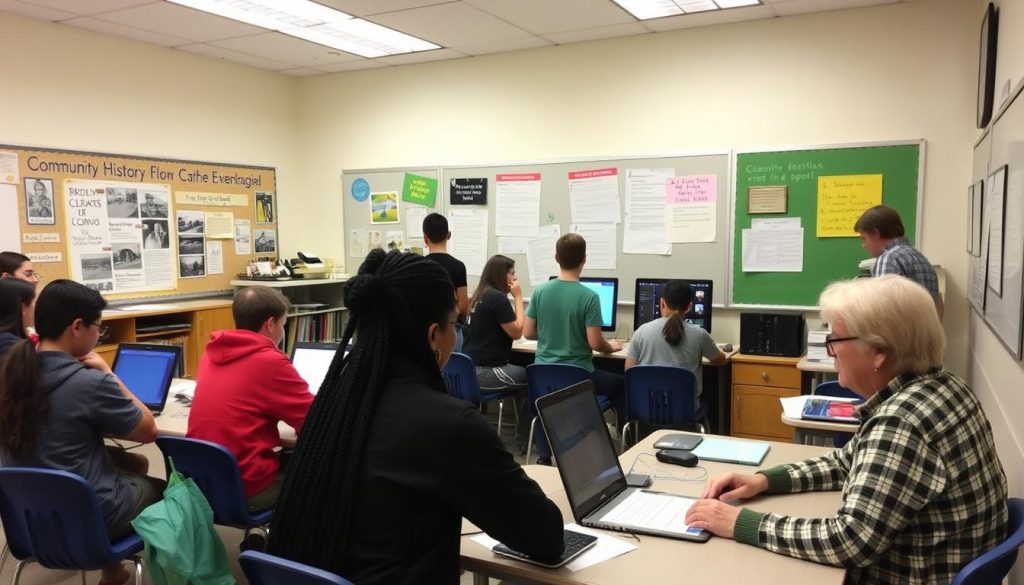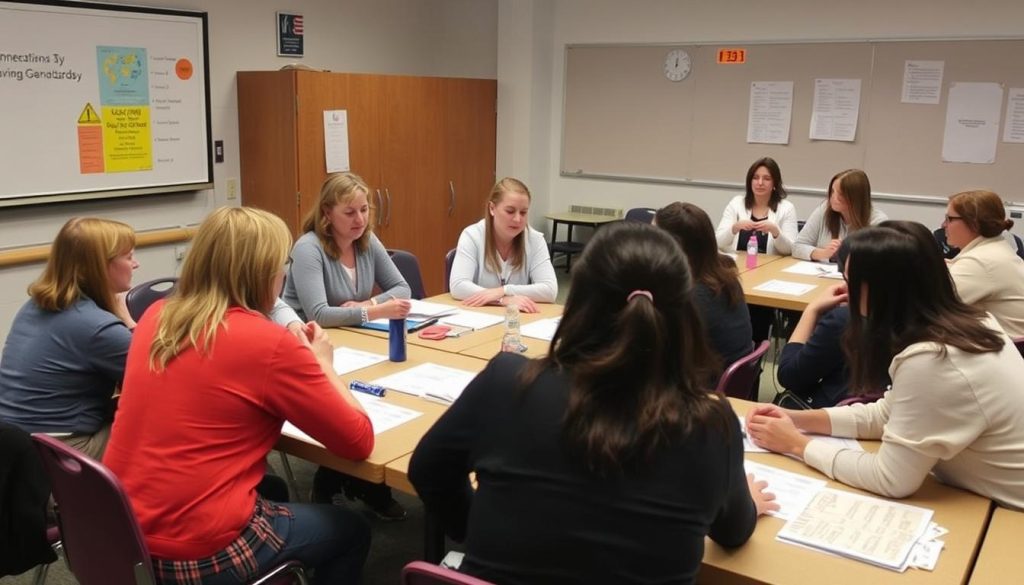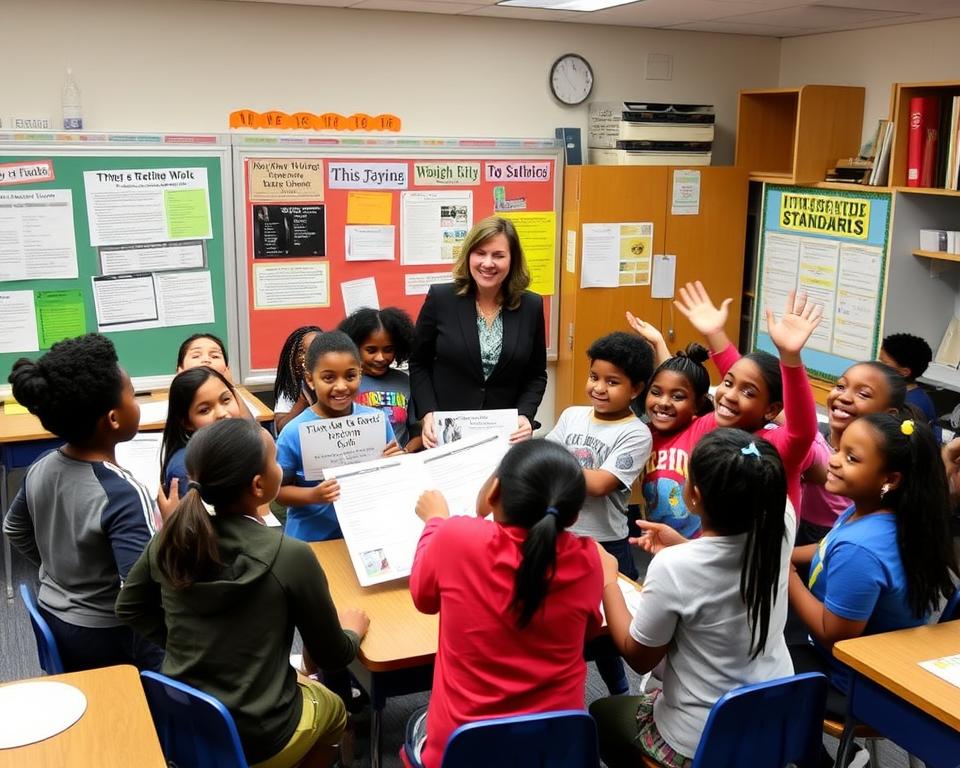In this comprehensive guide, we’ll explore practical approaches to standards integration that can transform your teaching practice without adding to your already full plate. Whether you’re a veteran teacher looking to refine your approach or new to the profession and feeling overwhelmed, these strategies will help you develop the teacher skills needed to create cohesive, standards-aligned learning experiences for your students.
Understanding the Power of Integrating Standards
Before diving into implementation strategies, it’s important to understand what we mean by integrating standards. Integration goes beyond simple alignment, where standards from different subjects are taught side by side. True integration creates meaningful connections between standards, allowing students to see how concepts relate across disciplines.
When we effectively integrate standards, we’re not just saving time—we’re enhancing learning. Research consistently shows that contextual, connected learning experiences lead to deeper understanding and better retention. A study published by ASCD found that students in integrated learning environments demonstrated stronger problem-solving skills and greater engagement compared to those in traditional, siloed classrooms.
Integration requires specific teacher skills that develop over time. These include the ability to identify natural connections between standards, create cohesive learning experiences, and assess student understanding across multiple objectives. As you build these teacher skills, you’ll find that integration becomes more intuitive and less time-consuming.
Integration is not about doing more—it’s about teaching smarter. When we thoughtfully combine standards, we create learning experiences that are more meaningful, efficient, and engaging for our students.
The benefits of integrating standards extend beyond time management. When students experience an integrated curriculum, they develop a more holistic understanding of how knowledge connects across subjects. This mirrors real-world problem solving, where challenges rarely fit neatly into a single subject area.
The Planning Process for Integrating Standards
Effective standards integration begins with intentional planning. While it may require more upfront investment, this approach ultimately saves time and enhances learning. Here’s a step-by-step process to get started:
- Start with curriculum mapping – Begin by examining your grade-level standards across subjects. Look for natural connections and overlapping concepts.
- Identify priority standards – Not all standards carry equal weight. Focus on identifying the most critical standards that will serve as anchors for your integration efforts.
- Look for complementary skills – Find standards that reinforce each other, such as reading informational texts (ELA) and understanding scientific concepts (Science).
- Create thematic units – Develop units around central themes or essential questions that naturally incorporate multiple standards.
- Plan for assessment – Design assessments that measure student progress across multiple standards simultaneously.
Developing these planning teacher skills takes practice. Many educators find it helpful to start small, perhaps integrating just two subject areas before expanding to more comprehensive approaches. The goal is to create learning experiences where standards complement and reinforce each other naturally.
One effective approach is to use a backward design model, where you begin with your desired outcomes and then identify which standards from different subject areas will help students achieve those outcomes. This ensures that your integration efforts remain focused on meaningful learning rather than superficial connections.
Ready to master standards integration?
Our comprehensive course provides step-by-step guidance for creating integrated curriculum units that save time while deepening student learning.
Practical Strategies for Integrating Standards Across Subjects
Now that we understand the planning process, let’s explore specific strategies for integrating standards across different subject areas. These approaches have been successfully implemented by teachers across grade levels and can be adapted to fit your specific classroom context.
1. Literacy-Based Integration
One of the most accessible entry points for standards integration is through literacy. Reading and writing standards can be naturally woven into science, social studies, and even math instruction. Consider these approaches:
- Use content-area texts – Select informational texts that address science or social studies standards while practicing reading comprehension skills.
- Implement writing across the curriculum – Have students write explanations of mathematical thinking or scientific observations.
- Create research projects – Design projects that require students to research topics aligned to content standards while practicing research and writing skills.
These integration strategies help develop critical teacher skills related to text selection and questioning techniques. By thoughtfully choosing texts and crafting questions that address multiple standards, you maximize instructional impact.
2. Project-Based Learning
Project-based learning (PBL) offers a powerful framework for integrating standards across multiple subjects. Well-designed projects naturally incorporate various standards while engaging students in authentic problem-solving.
For example, a project focused on designing a community garden might integrate:
Math Standards
- Area and perimeter calculations
- Data collection and analysis
- Budgeting and cost analysis
Science Standards
- Plant life cycles
- Ecosystems and interdependence
- Weather patterns and climate
Implementing effective PBL requires specific teacher skills, including facilitation, assessment design, and project management. As you develop these skills, your ability to create integrated learning experiences will grow.

3. Thematic Units
Organizing instruction around thematic units provides another effective approach to integrating standards. A well-designed thematic unit creates a cohesive learning experience where standards from multiple subjects support a central theme or essential question.
For example, a unit on “Change Over Time” might integrate:
- ELA – Reading historical fiction and writing narrative texts about change
- Social Studies – Examining historical changes in communities
- Science – Studying life cycles, erosion, or other natural changes
- Math – Analyzing data to identify patterns of change
Creating effective thematic units is one of the more advanced teacher skills in standards integration. It requires a deep understanding of curriculum across subjects and the ability to make meaningful connections between seemingly disparate concepts.
For more detailed guidance on developing thematic units, explore our professional development courses designed specifically for K-12 educators.
Time-Saving Benefits of Integrating Standards
One of the most compelling reasons to pursue standards integration is the potential for significant time savings. When implemented effectively, integration allows you to address multiple standards simultaneously, reducing the pressure to “fit it all in.”
Consider these time-saving benefits:
Benefits of Integration
- Address multiple standards in a single lesson
- Reduce redundancy across subject areas
- Create deeper connections that require less reteaching
- Streamline assessment processes
- Increase student engagement, reducing behavior management time
Challenges to Address
- Requires more upfront planning time
- May need to realign existing resources
- Requires coordination with colleagues
- Assessment complexity increases
- Initial implementation learning curve
Developing efficient planning teacher skills is essential for maximizing these time-saving benefits. Many teachers find that creating planning templates specifically designed for integration helps streamline the process.
It’s important to note that while integration requires an initial investment of time, the long-term benefits far outweigh the costs. As you develop your teacher skills in this area, the planning process becomes more efficient, and the instructional benefits become more pronounced.
Real Classroom Examples of Integrating Standards Successfully
To help illustrate how standards integration works in practice, let’s examine some real-world examples from different grade levels. These examples demonstrate how teachers have successfully integrated standards to create meaningful learning experiences while saving instructional time.
Elementary Example: Water Cycle Unit (3rd Grade)
In this integrated unit, students explore the water cycle through multiple subject lenses:
| Subject | Standards Addressed | Activities |
| Science | Water cycle, states of matter, weather patterns | Experiments demonstrating evaporation, condensation, and precipitation |
| ELA | Informational text features, research skills, explanatory writing | Reading texts about water, creating informational posters, writing explanations |
| Math | Measurement, data collection, graphing | Measuring rainfall, creating precipitation graphs, analyzing weather data |
| Art | Visual representation, color theory | Creating water cycle models, illustrating water in different states |
This integration allowed the teacher to address multiple standards simultaneously while creating a cohesive learning experience. Students developed a deeper understanding of the water cycle because they explored it through multiple lenses.
Middle School Example: Community History Project (7th Grade)
In this project-based unit, students researched their community’s history and created digital presentations:
- Social Studies Standards: Local history, primary sources, historical analysis
- ELA Standards: Research skills, informational writing, speaking and listening
- Technology Standards: Digital tools, media creation, online research
- Math Standards: Timeline creation, statistical analysis of historical data
By integrating these standards, the teacher created an authentic learning experience that engaged students while addressing multiple learning objectives. The project required students to apply various teacher skills they had observed, including research methods, analytical thinking, and effective communication.

High School Example: Climate Change Analysis (10th Grade)
This interdisciplinary unit integrated science, math, and ELA standards:
- Science: Climate systems, human impact on environment, data analysis
- Math: Statistical analysis, graphing, trend identification
- ELA: Argumentative writing, research, critical evaluation of sources
Students analyzed climate data, researched potential solutions, and created evidence-based arguments about climate policy. This integration allowed for deep exploration of a complex topic while addressing standards across multiple subject areas.
These examples demonstrate how integrating standards can create rich learning experiences while maximizing instructional time. The key teacher skills demonstrated include identifying meaningful connections between standards and designing cohesive learning activities that address multiple objectives.
Looking for more integration examples?
Access our library of grade-specific integration examples and templates to jumpstart your planning process.
Overcoming Common Challenges When Integrating Standards
While the benefits of standards integration are significant, implementation isn’t without challenges. Let’s address some common obstacles and practical solutions:
Challenge: Finding time for collaborative planning
Solution: Start with grade-level or department meetings to identify potential integration points. Even 15-20 minutes of focused discussion can yield valuable connections. Consider using shared digital planning documents that colleagues can contribute to asynchronously.
Challenge: Aligning with district pacing guides
Solution: Begin by mapping your district’s pacing guides across subjects to identify natural alignment points. Meet with curriculum coordinators to discuss your integration plans and how they support district goals. Often, administrators are supportive when they understand how integration enhances learning while maintaining fidelity to required curriculum.
Challenge: Assessment complexity
Solution: Develop rubrics that clearly delineate standards from different subject areas. This allows you to assess multiple standards through a single project or assignment while maintaining clarity about student progress in each area. Performance-based assessments often work well for integrated units.
Challenge: Balancing depth and breadth
Solution: Focus integration efforts on priority standards that represent the most critical learning in each subject area. This ensures that integration enhances rather than dilutes learning. Remember that not every standard needs to be integrated—some are best taught in isolation.
Developing problem-solving teacher skills is essential for overcoming these challenges. The ability to adapt plans, collaborate effectively, and maintain flexibility will serve you well as you implement integrated approaches.

Remember that integration is a journey, not a destination. Start small, celebrate successes, and refine your approach based on what works for your students and your teaching context. As you develop your teacher skills in this area, integration will become more intuitive and less time-consuming.
Professional Development for Integrating Standards
Developing the teacher skills needed for effective standards integration requires ongoing professional growth. Here are some resources and approaches to support your development in this area:
1. Collaborative Learning Communities
Connecting with colleagues who are also implementing integrated approaches can provide valuable support and inspiration. Consider:
- Professional Learning Communities (PLCs) focused on curriculum integration
- Cross-departmental planning teams that meet regularly to identify integration opportunities
- Online teacher communities where educators share integration success stories and resources
These collaborative structures help develop the communication and teamwork teacher skills that support effective integration.
2. Structured Professional Development
Formal professional development can accelerate your growth in standards integration. Look for opportunities such as:
- Workshops and courses specifically focused on curriculum integration
- Coaching or mentoring from educators experienced in integrated approaches
- Graduate courses in curriculum design and interdisciplinary teaching
These structured learning experiences can help you develop the planning and implementation teacher skills needed for successful integration.

3. Self-Directed Learning
Many teachers develop integration skills through self-directed professional learning:
- Professional reading about curriculum integration and interdisciplinary teaching
- Action research in your own classroom, testing and refining integration approaches
- Curriculum analysis to identify natural connection points across subject areas
These self-directed approaches help develop the reflective practice teacher skills that support continuous improvement in integration efforts.
Enhance your standards integration skills
Our comprehensive online course provides practical strategies, planning templates, and implementation support for K-12 teachers.
Remember that developing integration teacher skills is an ongoing process. Each attempt at integration provides valuable learning that informs future efforts. Be patient with yourself and celebrate the progress you make along the way.
Conclusion: Making Integrating Standards Work for You
Standards integration represents a powerful approach to curriculum design that can transform your teaching practice. By thoughtfully connecting standards across subject areas, you create more cohesive, engaging learning experiences while maximizing instructional time.
As we’ve explored throughout this article, successful integration requires specific teacher skills, including curriculum analysis, instructional design, and assessment. These skills develop over time through practice, collaboration, and professional learning.
Remember these key takeaways as you begin or continue your integration journey:
- Start small – Begin with natural connections between two subject areas before expanding to more comprehensive integration.
- Focus on quality over quantity – Meaningful connections between a few standards are more valuable than superficial connections across many.
- Collaborate when possible – Working with colleagues can provide fresh perspectives and shared resources.
- Reflect and refine – Use student responses and outcomes to continuously improve your integration approaches.
- Be patient with the process – Integration gets easier and more intuitive with practice.
By investing in developing your teacher skills for standards integration, you’re not only making your teaching more efficient—you’re creating learning experiences that help students see connections across disciplines, just as they’ll need to do in the real world.

We hope this guide has provided practical insights and strategies to support your standards integration efforts. Remember that integration is both an art and a science—it requires creativity, analysis, and a willingness to experiment. As you develop these teacher skills, you’ll find that integration becomes a natural part of your instructional approach.
Ready to transform your teaching through standards integration?
Access our complete library of integration resources, planning templates, and professional development opportunities.




